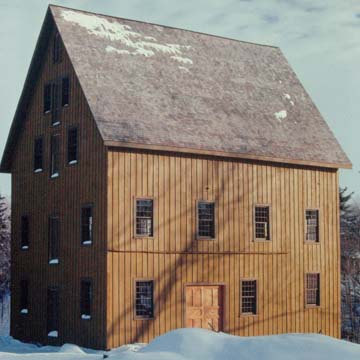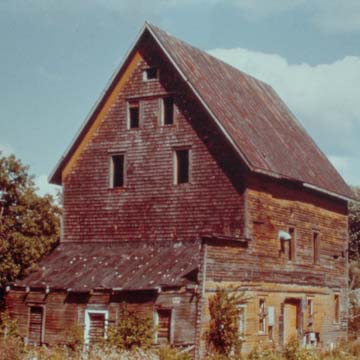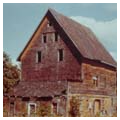Standing on the west bank of the Battle Creek River, this water-powered gristmill is evidence in the village of Bellevue of the importance of the grain-processing industry to the well-being and economic growth of frontier communities. Firmly built on a rubble stone foundation, the tall, rectangular three-and-a-half-story structure is composed of an interlocking frame of massive 12 × 12–inch walnut timbers and 3 × 12–inch floor joists and covered with board-and-batten and tongue-and-groove siding. Pulleys, drive shafts, and chutes used in the milling process remain intact inside. Built for Manlius Mann of Marshall by Horatio Hall, a Bellevue carpenter-builder, the mill operated from 1852 to 1958. In 1888 a Smith Roller Process was installed. In 1928, when A. G. Butler acquired the mill, turbines were added, and flour was milled under the trade name Bellevue Blue Bird Flour. In its plainness and concern for utility, it exemplifies the strong vernacular tradition in much the same way as did the early textile mills in New England. William and Carol Stockhausen, the current owners, are rehabilitating the mill for use as a summer house.
You are here
Bellevue Mill
If SAH Archipedia has been useful to you, please consider supporting it.
SAH Archipedia tells the story of the United States through its buildings, landscapes, and cities. This freely available resource empowers the public with authoritative knowledge that deepens their understanding and appreciation of the built environment. But the Society of Architectural Historians, which created SAH Archipedia with University of Virginia Press, needs your support to maintain the high-caliber research, writing, photography, cartography, editing, design, and programming that make SAH Archipedia a trusted online resource available to all who value the history of place, heritage tourism, and learning.





